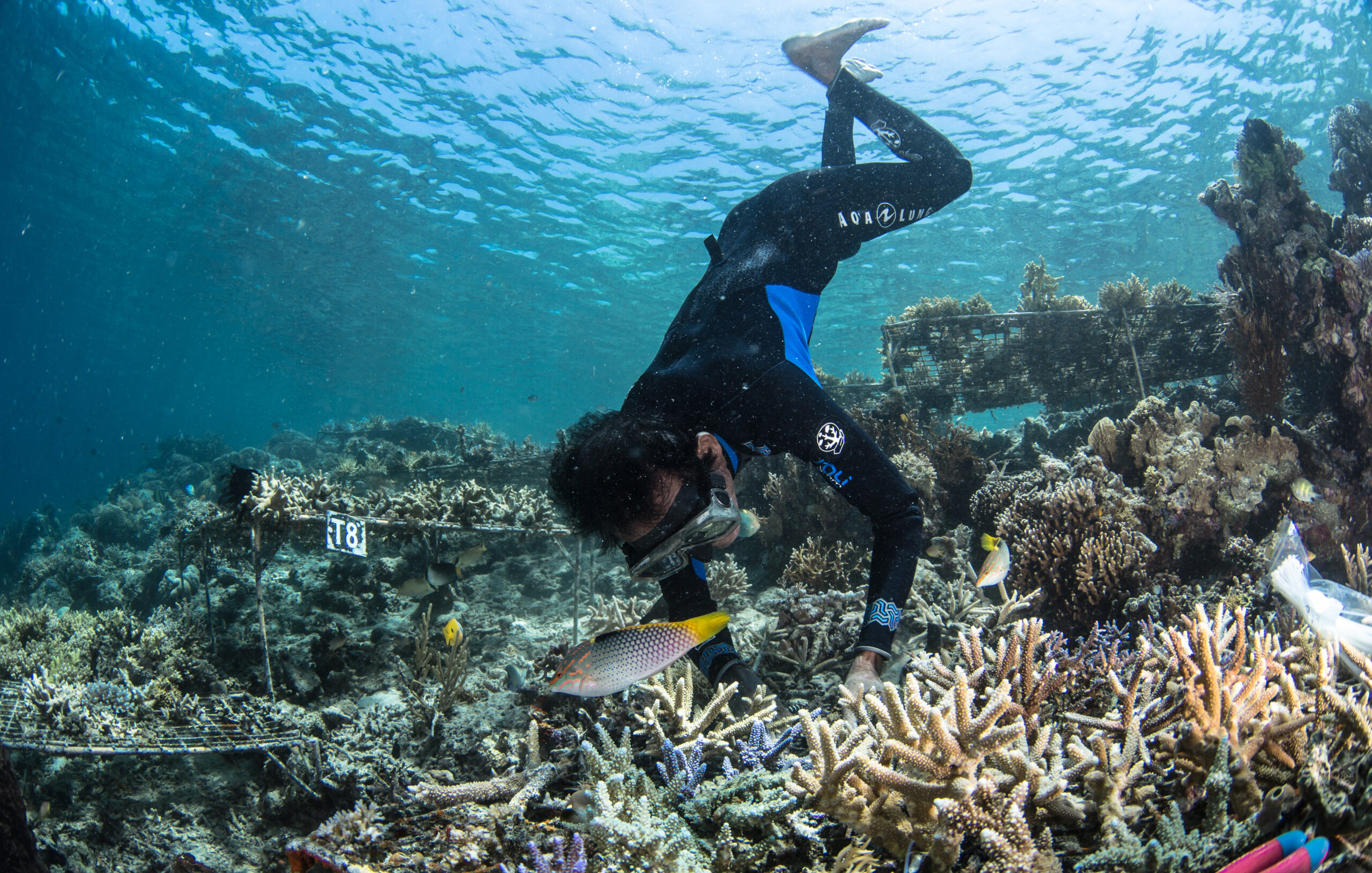Excerpt:
A community-based approach to restoration combined with an ingenious device can bring back reefs traumatized by dynamite fishing.
Out among a scattering of islands spilled like beads into the Indonesian shallows, an extended experiment in coral restoration has revealed something marvelous: With a tender touch and a community to care for it, a reef can fully recover from the devastation of blast fishing in just four years.
The Spermonde Archipelago, which lies a dozen miles off the coast of South Sulawesi, Indonesia, was long home to some of the most dynamic reefs in the world, where schools of fish rainbowed over coral blanketing the seafloor. But dynamite fishing turned swaths of those wonders into wastes. That was until 2018, when academics, government agencies, nonprofits, and local communities came together to restore them with a novel approach developed over years of testing and refinement. Now, a team of marine biologists and reef ecologists has released the first results in a suite of studies investigating the program’s achievements. The study, published earlier this month in Current Biology, shows that the method can help reefs rebuild in just a few years.
“We do always refer to corals, in particular in reefs, as these slow-growing ecosystems that take a long time to recover, which they are,” said Rebecca Albright, a coral biologist at the California Academy of Sciences who was not involved in the study. “So showing that they can regain rapid growth within four years is very encouraging.”
Promoting this recovery in Sulawesi is particularly important, because the island sits at the center of the Indonesian archipelago and in one corner of the Coral Triangle. This region, and Indonesia in particular, is home to the largest concentration of reefs and coral habitat in the world. Yet many of these vibrant ecosystems were pulverized by decades of fishers dropping explosives into the water to concuss fish they could then scoop out of the sea. With loose rubble then left to tumble in the currents, corals had little hope of recovering on their own. Any coral spawns that might settle and grow were liable to be crushed by errant rocks.
To overcome this, the Mars Coral Reef Restoration Program — a nonprofit funded by the Mars corporation known for M&Ms, Twix, and Snickers — brought together restoration experts who developed what they call the reef star: a six-legged steel spider coated in sand, to which coral fragments harvested from nearby healthy reefs or found rolling with the tides are strapped. Restoration workers, often members of local communities, deploy them across dozens of sites. These webs provide the protection and stability the transplants need to grow, while also settling the debris created by blast fishing. Without such help, researchers believe that corals — those strange yet essential sea creatures — might never have returned to the damaged areas.
Within a year of placing the reef stars, the fragments grew into colonies. By year two, the branches of neighboring colonies knit into a marine embrace. By 2023, the former fragments had grown into orange bushels, broad yellow pads, and twisting pink tentacles that trains of fluorescent fish explore…









